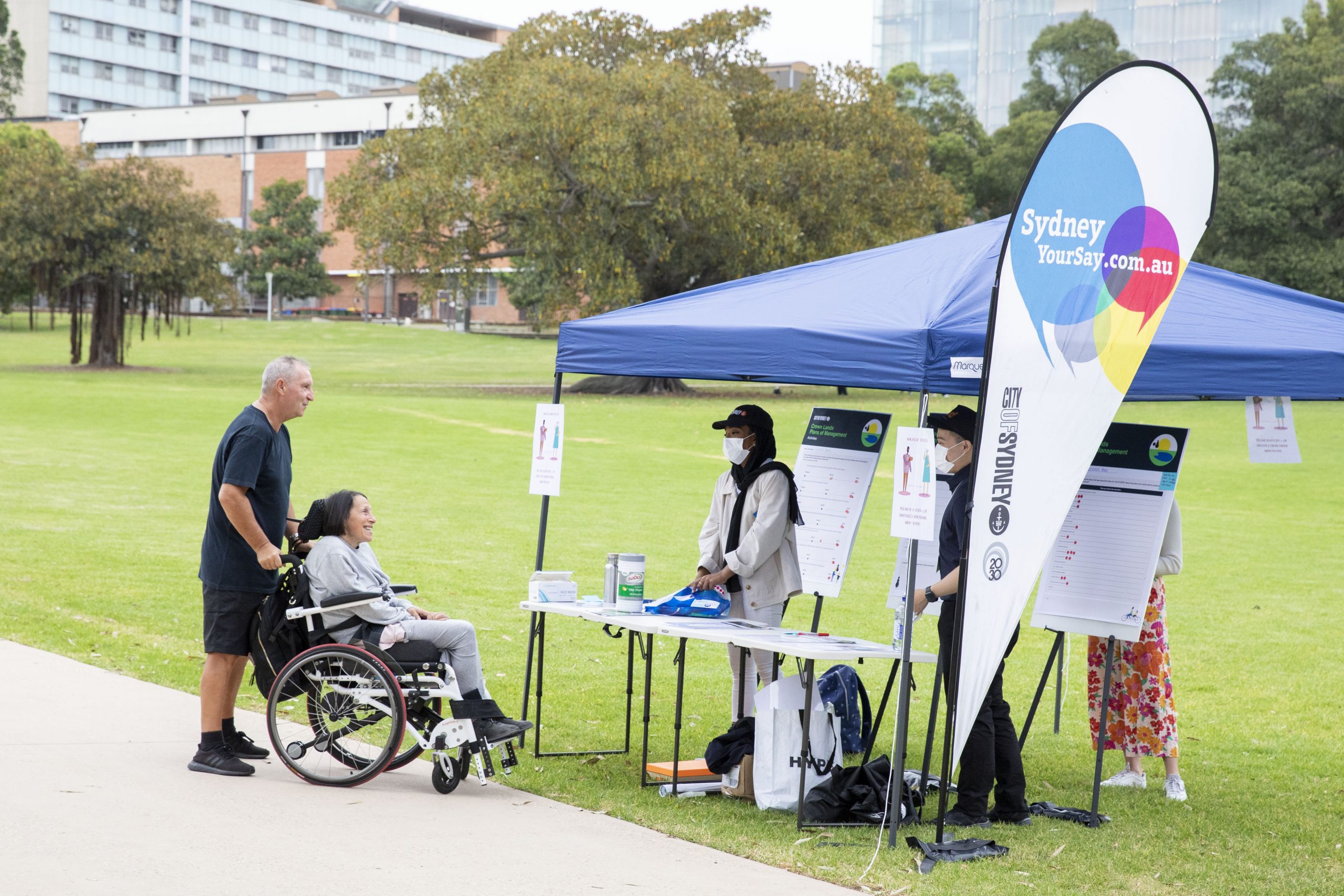Blacktown City Council; Sutherland Shire and Georges River Council; Burwood Council; City of Canada Bay; Woollahra Municipal Council
Informing Disability and Inclusion Action Plans for local government
People with disability have a fundamental right to access facilities and services that enable them to fully participate in their local communities, yet face unique challenges and barriers to their wellbeing and full participation.
Our team has significant experience developing and delivering targeted community and stakeholder engagement to inform Disability and Inclusion Action Plans (DIAPs) for local governments in NSW, to create liveable and inclusive places for people with disability to live, play and work.
We have delivered DIAPs for Blacktown, Burwood, Fairfield and Queanbeyan-Palerang councils, and disability-focussed engagement and research for Sutherland Shire, Canada Bay, Hills Shire, Waverley and Woollahra councils.
Our approach
We understand the importance of councils considering the diversity of people with disability in their action planning for inclusion, and we take a place-specific and strengths-based approach to ensure each DIAP responds to and meets the needs of its local community.
For example, compared to Greater Sydney, Blacktown City LGA has a larger proportion of people living with disability across all age groups; however, a much higher proportion of people over 85 years old require assistance with daily living (59.8%), compared to Greater Sydney (50.4%). This may present an additional barrier for elderly people with disability in the area, and our work supporting Blacktown City Council to revise its DIAP identified a need to develop a plan that embraces cross-council and sector collaboration, and works for the Blacktown community.
As experts in developing outcomes-focused and deliverable strategies, needs studies and plans based on a robust evidence base, Cred works collaboratively with councils’ project teams and internal stakeholders to develop community-first consultation strategies that are centred on co-design with people with disability.
For our community engagement to inform the City of Canada Bay DIAP, we consulted with a broad demographic across the LGA, including people with disability, carers, service providers, local businesses and the local community – designing a program that aligned with the four key areas of the NSW Disability Inclusion Plan: attitudes and behaviours, liveable communities, employment and systems and processes.
Engagement tools included targeted discussion groups, focus groups with service providers, an online intercept survey optimised for accessibility, as well as interviews with council staff.

A man smiles as he participates in an immersive activity during an engagement workshop.

